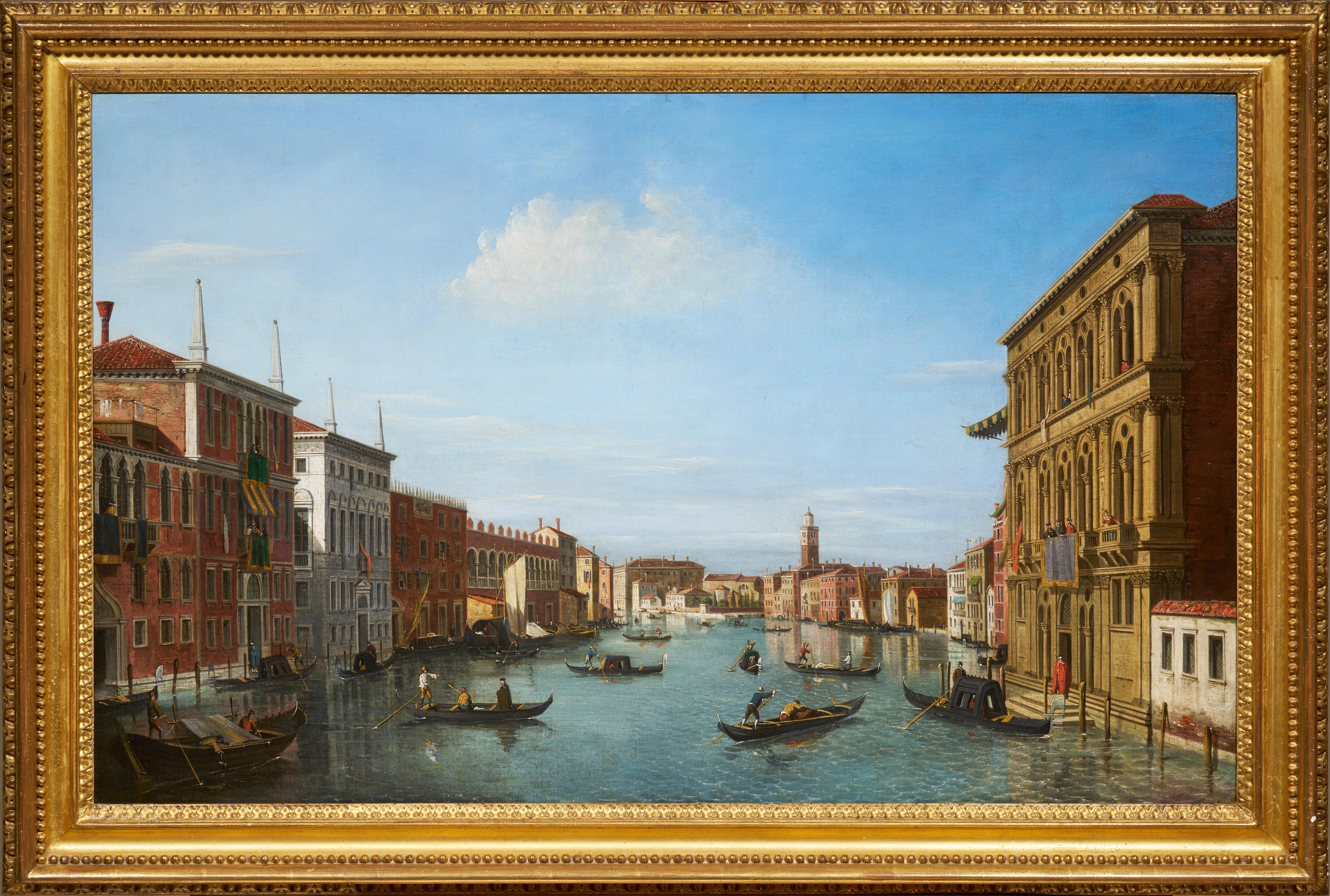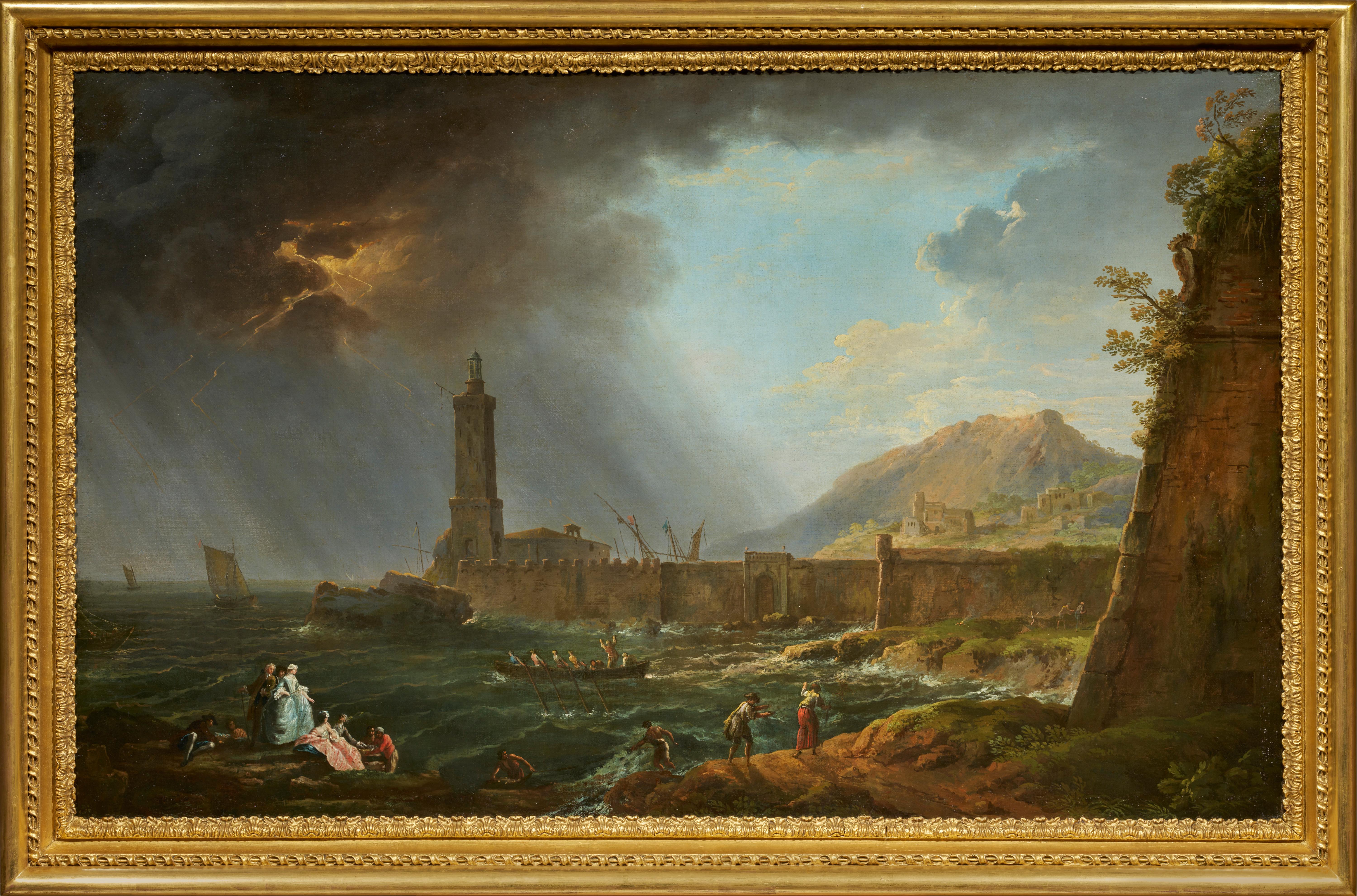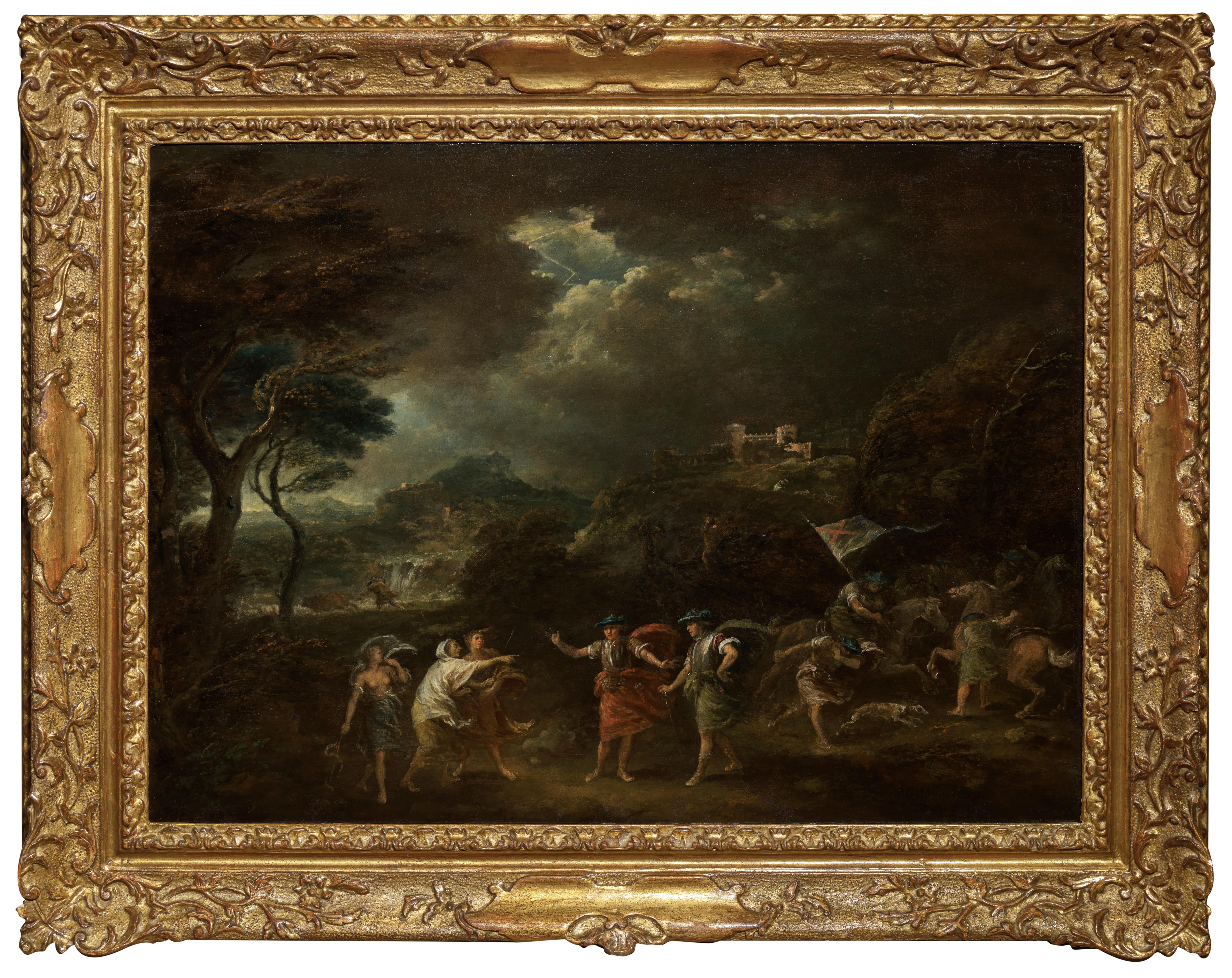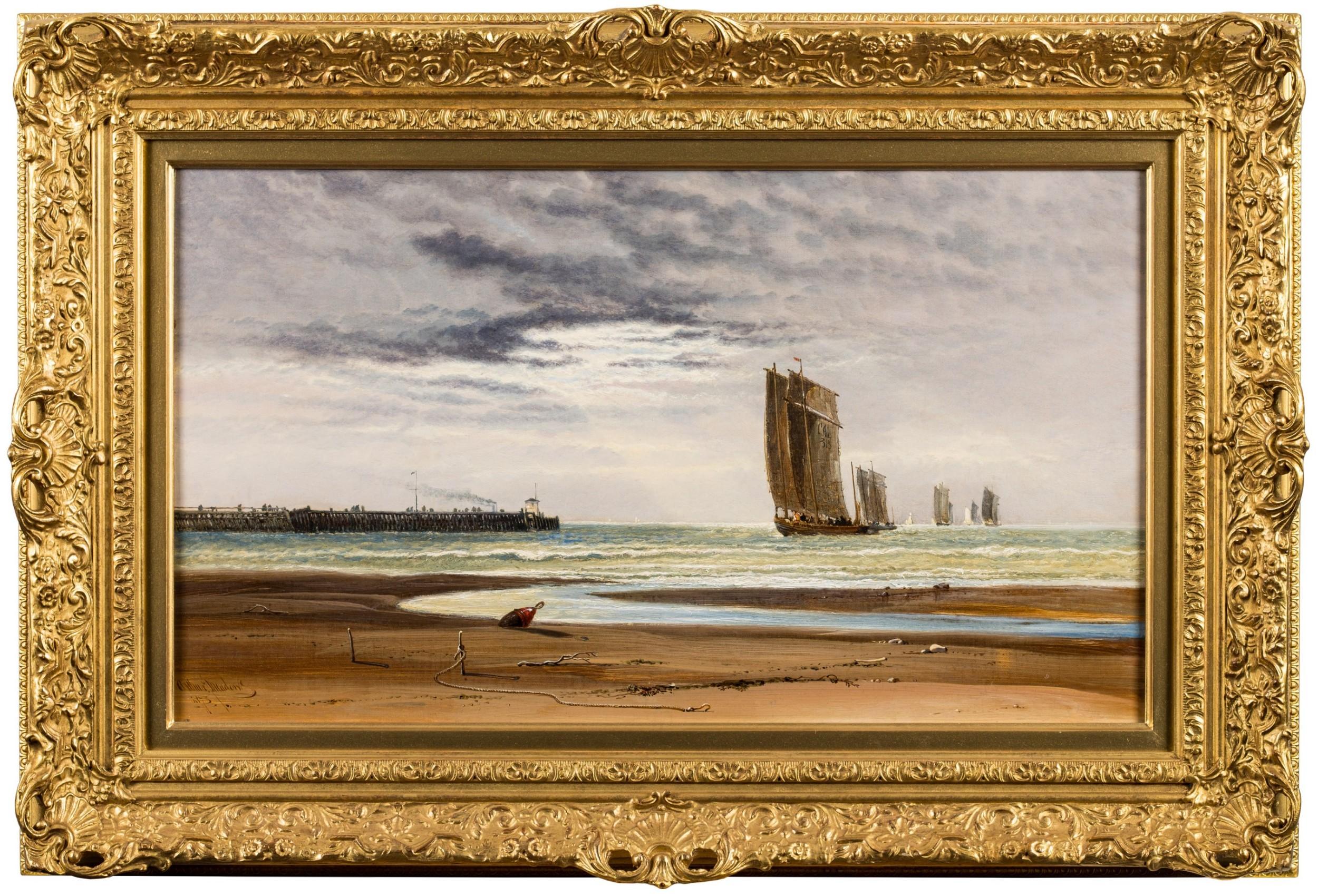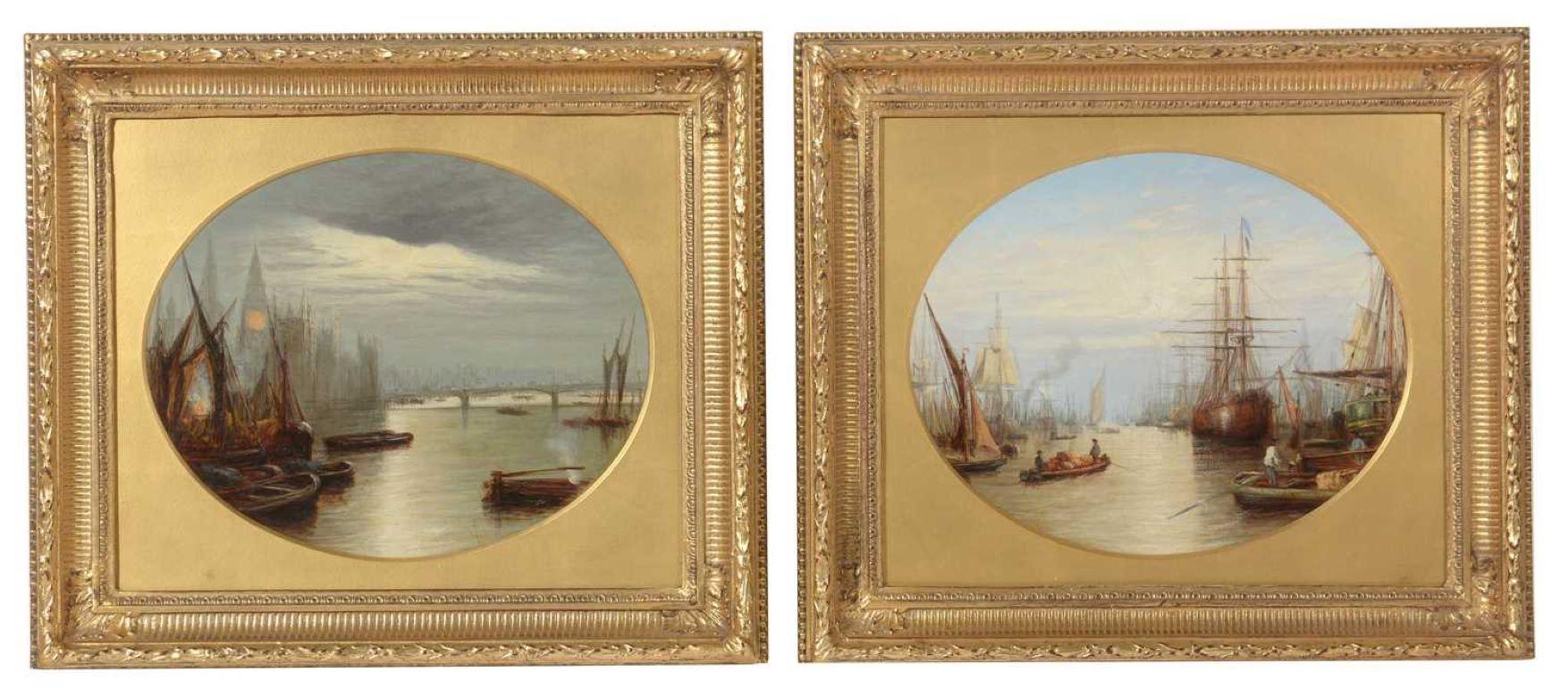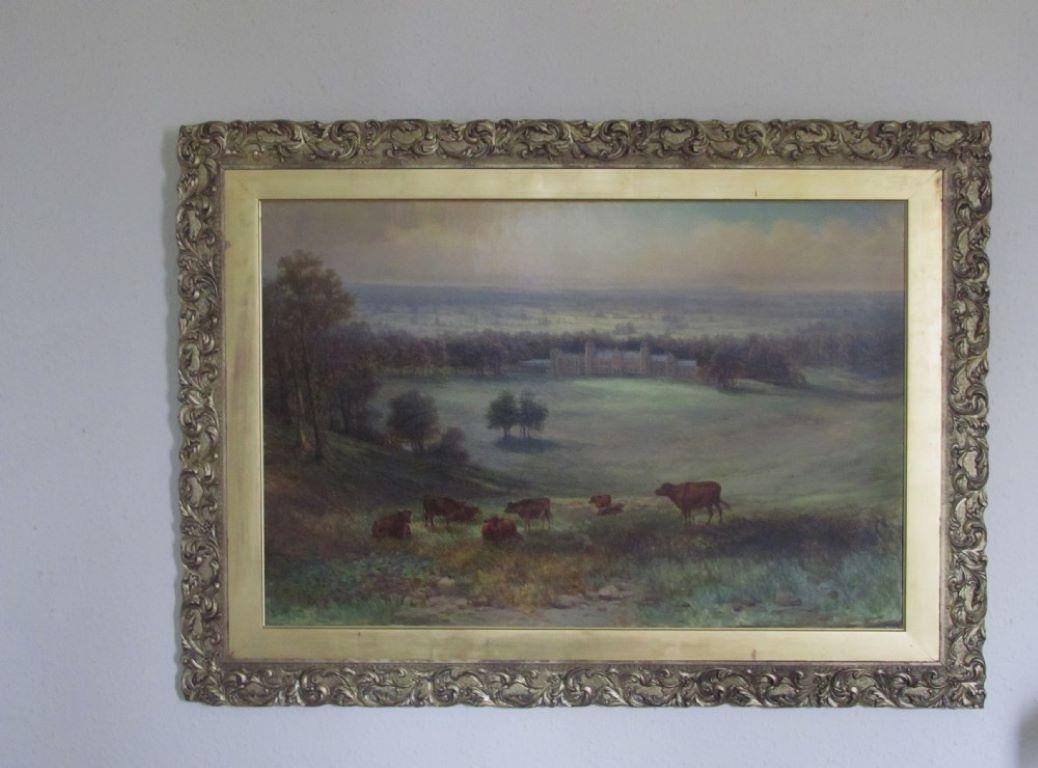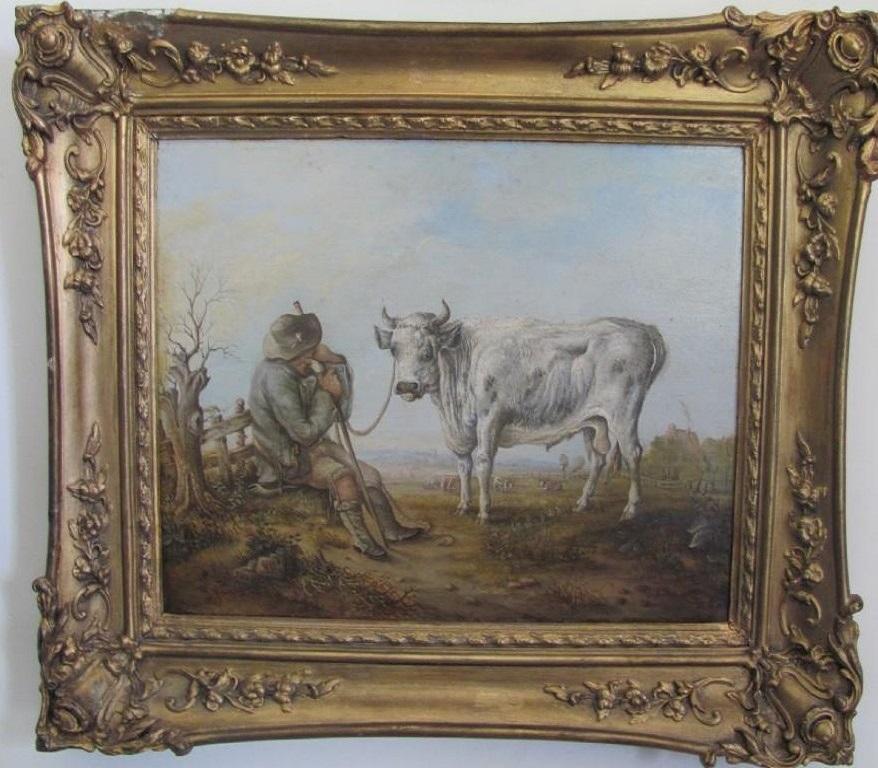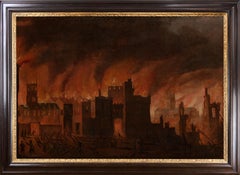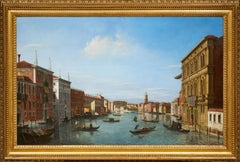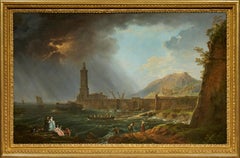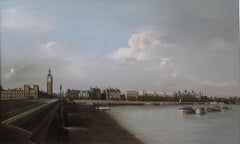
HOUSES OF PARLIAMENT VIEWED FROM SOUTH BANK LONDON - LANDSCAPE PAINTING
View Similar Items
1 of 15
THOMAS EASLEYHOUSES OF PARLIAMENT VIEWED FROM SOUTH BANK LONDON - LANDSCAPE PAINTING1988
1988
About the Item
- Creator:THOMAS EASLEY
- Creation Year:1988
- Dimensions:Height: 30 in (76.2 cm)Width: 50 in (127 cm)
- Medium:
- Movement & Style:
- Period:
- Condition:The painting is in god order but the frame is a little tired.
- Gallery Location:Ashford, GB
- Reference Number:1stDibs: LU83933854051
You May Also Like
- Early oil depicting the Great Fire of LondonLocated in London, GBThe Great Fire of London in September 1666 was one of the greatest disasters in the city’s history. The City, with its wooden houses crowded together in narrow streets, was a natural fire risk, and predictions that London would burn down became a shocking reality. The fire began in a bakery in Pudding Lane, an area near the Thames teeming with warehouses and shops full of flammable materials, such as timber, oil, coal, pitch and turpentine. Inevitably the fire spread rapidly from this area into the City. Our painting depicts the impact of the fire on those who were caught in it and creates a very dramatic impression of what the fire was like. Closer inspection reveals a scene of chaos and panic with people running out of the gates. It shows Cripplegate in the north of the City, with St Giles without Cripplegate to its left, in flames (on the site of the present day Barbican). The painting probably represents the fire on the night of Tuesday 4 September, when four-fifths of the City was burning at once, including St Paul's Cathedral. Old St Paul’s can be seen to the right of the canvas, the medieval church with its thick stone walls, was considered a place of safety, but the building was covered in wooden scaffolding as it was in the midst of being restored by the then little known architect, Christopher Wren and caught fire. Our painting seems to depict a specific moment on the Tuesday night when the lead on St Paul’s caught fire and, as the diarist John Evelyn described: ‘the stones of Paul’s flew like grenades, the melting lead running down the streets in a stream and the very pavements glowing with the firey redness, so as no horse, nor man, was able to tread on them.’ Although the loss of life was minimal, some accounts record only sixteen perished, the magnitude of the property loss was shocking – some four hundred and thirty acres, about eighty per cent of the City proper was destroyed, including over thirteen thousand houses, eighty-nine churches, and fifty-two Guild Halls. Thousands were homeless and financially ruined. The Great Fire, and the subsequent fire of 1676, which destroyed over six hundred houses south of the Thames, changed the appearance of London forever. The one constructive outcome of the Great Fire was that the plague, which had devastated the population of London since 1665, diminished greatly, due to the mass death of the plague-carrying rats in the blaze. The fire was widely reported in eyewitness accounts, newspapers, letters and diaries. Samuel Pepys recorded climbing the steeple of Barking Church from which he viewed the destroyed City: ‘the saddest sight of desolation that I ever saw.’ There was an official enquiry into the causes of the fire, petitions to the King and Lord Mayor to rebuild, new legislation and building Acts. Naturally, the fire became a dramatic and extremely popular subject for painters and engravers. A group of works relatively closely related to the present picture have been traditionally ascribed to Jan Griffier...Category
17th Century Old Masters Landscape Paintings
MaterialsOil, Canvas
- View of the Grand Canal, a painting by William James, after CanalettoBy William JamesLocated in PARIS, FRAlthough we have little bibliographical information on William James, we know that he was trained by Canaletto during the painter's stay in England between 1746 and 1755. Although he may never have been to Venice, William James remained under the influence of his master for a long time and became known for his paintings inspired by Canaletto's artworks. In this painting, William James is inspired by one of the twelve views of the Grand Canal painted by Canaletto for Joseph Smith, or more precisely by the engraving made by Antonio Visentini in 1735 after this painting. He delivers a very personal version, vibrant with colours, in which he brilliantly reproduces the moving surface of the sea, animated by the ever-changing traffic of the gondolas. 1. William James, the English follower...Category
Mid-18th Century Old Masters Landscape Paintings
MaterialsCanvas, Oil
- The Arrival of the Storm, a painting by the school of Claude-Joseph VernetBy Claude-Joseph VernetLocated in PARIS, FRDuring his stay in Italy from 1734 to 1752, Joseph Vernet made several trips to Naples between 1737 and 1746, where he painted numerous maritime scenes. The pre...Category
1770s Old Masters Landscape Paintings
MaterialsCanvas, Oil
- Italian Landscape with Jack Players, a painting by Gaspard Dughet (1615 - 1675)By Gaspard DughetLocated in PARIS, FRHere Gaspard Dughet offers us an idyllic vision of the Roman countryside. The stages follow one another in a perfectly structured composition, revealing here a lake, there travellers walking along, gradually leading our eye to the blue horizon. But behind its classical composition, this landscape is particularly interesting because of three anthropomorphic details that the artist has hidden, opening the way to a radically different interpretation... 1. Gaspard Dughet, a landscape artist in the light of Poussin Gaspard Dughet was born on June 4th, 1615 in Rome where his father, of French origin, was a pastry cook. He was probably named Gaspard in honour of his godfather Baron Gaspard de Morant, who was, or may have been, his father's employer. His older sister Jeanne married the painter Nicolas Poussin (1594 - 1655) on September 1st, 1630. The young Gaspard was apprenticed with his brother-in-law at the beginning of 1631, which led his entourage to name him Gaspard Poussin. The first preserved works of the painter date from the years 1633-1634 and were painted in Poussin’s studio. Around 1635, Gaspard Dughet became emancipated and began to frequent the Bamboccianti circle. In 1636, he became friends with the painter Jean Miel (1599 - 1656), but also with Pier Francesco Mola (1612 - 1666) and Pietro da Cortona (1596 - 1669). This was also the time of his first trips throughout Italy. The painter, although of French origin, appears never to have visited France. In 1646 he settled permanently in Rome. A recognized painter with a solid book of orders, he remained faithful to landscape painting throughout his life, alternating between cabinet paintings and large decorative commissions, using both oil and fresco. Nailed to his bed by rheumatic fever at the age of 58, he died on May 25, 1675. 2. Discovering an idealized landscape Beyond a relatively dark foreground that takes us into the landscape, we discover a vast bluish horizon: a plateau surrounded by deep ravines advances to the right, overhanging an expanse of water that sparkles below. A road winds through a mountainous mass as if leading us to the fortress that crowns it; another town appears in the distance at the foot of three conical mountains. The composition is rigorous, mineral, and structured by geometric volumes. The various stages in the landscape lead one to the next attracting the eye towards the horizon located in the middle of the canvas. The general impression is that of a welcoming and serene nature. In many places the paint layer has shrunk, or become transparent, revealing the dark red preparation with which the canvas was covered and accentuating the contrasts. Human presence is limited to three jack players, leaning against a mound in the foreground. Their long garments, which may evoke Roman togas, contribute to the timelessness of the scene. Close examination of the canvas reveals two other travellers on the path winding between the rocks. Made tiny by the distance, their introduction in the middle register, typical of Dughet's art, lengthens the perspective. While it is difficult to date the work of a painter who devoted his entire life to the representation of landscapes, it is certain that this painting is a work from his later years. The trees that occupied the foreground of his youthful compositions have been relegated to the sides, a stretch of water separates us from the arid mountains counterbalanced by two trees represented on the opposite bank. The introduction of this stretch of water in the middle of the landscape betrays the influence of the Bolognese and in particular of the Dominiquin (1581 - 1641) A number of similarities with a drawing in the British Museum might suggest a date around 1656-1657, since, according to Marie-Nicole Boisclair , it has been compared with the Prado's Landscape with the Repentant Magdalene, painted at that period. 3. Three amazing anthropomorphic details While some late Renaissance landscapes offer a radical double reading, allowing one to see both a face or a human body behind the representation of a landscape, it seems interesting to us to hypothesize that Gaspard Dughet had fun here by slipping in a few details that, taken in isolation, evoke human or animal figures. We will give three examples, looking closely at a cloud, the trunk of a broken tree and the top of a cliff. The main cloud could thus evoke a Christ-like face or that of an antique god...Category
1650s Old Masters Landscape Paintings
MaterialsOil
- Stag Hunting in the Vicinity of Nuremberg by a German Artist Peter von BemmelLocated in PARIS, FRThis small landscape shows a hunting scene: two riders are chasing a stag with their dogs at the edge of a forest. Signed by Peter von Bemmel, it is typical of the production of this...Category
1720s Old Masters Landscape Paintings
MaterialsCopper
- River Landscape with Shepherds and Architecture, a painting by Jan van BunnikBy Jan van BunnikLocated in PARIS, FRThis painting has been the subject of a study by the art historian Fabrizio Dassie (available on request), confirming its inclusion in Jan van Bunnik’s corpus. In this painting, Ja...Category
Late 17th Century Old Masters Landscape Paintings
MaterialsCopper

